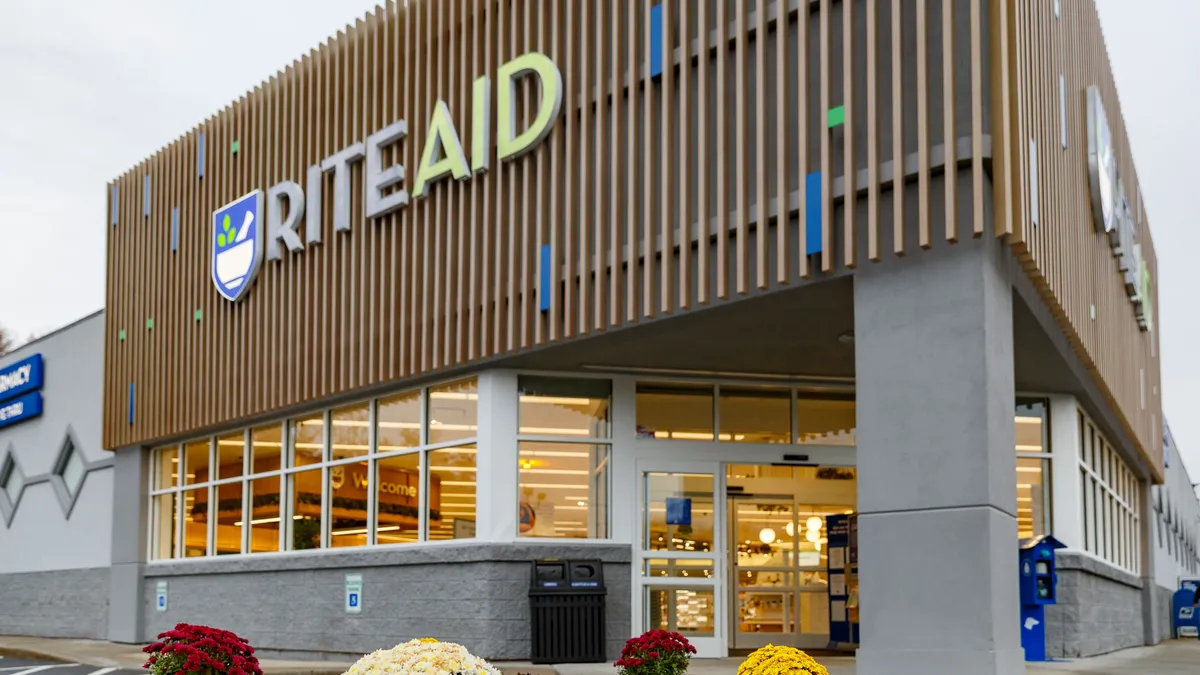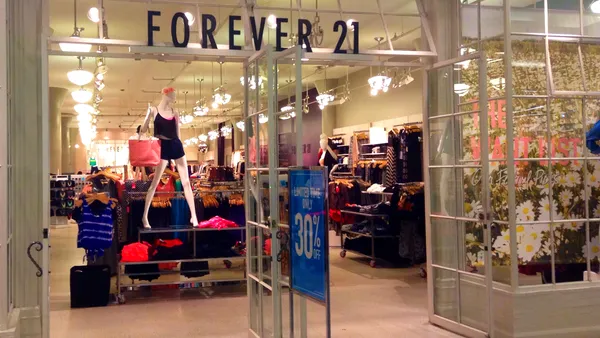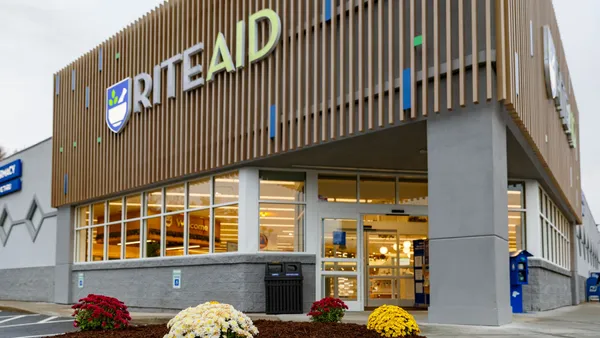Dive Brief:
- Rite Aid bought back more than $190 million of its own bonds ahead of schedule in a cash offer below their original face value, according to an announcement last week.
- The company, which has struggled for years under its debt load, said in an earnings presentation the move would reduce the debt that comes due in 2025. Rite Aid has paid down additional debt through sales of script files at closed stores and expects to pay down more this year with free cash flow.
- Analysts with S&P Global ratings deemed the recent debt purchase as a distressed exchange. S&P has a CCC+ rating for Rite Aid with a negative outlook based on the risk that the drugstore chain’s “turnaround efforts may not materialize quickly enough to increase its presently weak cash flow generation and margins.”
Dive Insight:
Rite Aid has long operated under a punishing debt load (with about $3 billion on its balance sheet) and struggled in a sector dominated by CVS, Walgreens and other larger, better-capitalized pharmacy retailers.
Earlier this year, analysts with Deutsche Bank laid out the precarity of Rite Aid’s financial life. With its debt servicing and operational needs, the company has to generate between $400 million to $450 million in annual adjusted EBITDA just to survive as a “going concern,” according to the analysts.
In its latest earnings presentation, Rite Aid said it expected $460 million to $500 million in adjusted EBITDA and positive cash flow for the fiscal year.
It also touted the debt reduction and a pace of store closures that, at 87, is ahead of schedule following a previous announcement of downsizing. The closures are on track to free up $60 million in EBITDA, according to the company.
Rite Aid CEO Heyward Donigan told analysts in late June to expect the company to close 145 stores in the near term, according to a Seeking Alpha transcript.
Cuts in the company’s retail pharmacy segment to the tune of $40 million should also pad the company’s earnings.
Rite Aid is also trying to expand sales, including through a partnership with Homeward to create small-store formats in underserved rural markets, store-within-a-store opportunities and the rollout of a new loyalty program. Of the smaller rural stores, Donigan said the company could open five in the format this fiscal year, and open 20 shortly after that.
Despite those efforts, the company has plenty of challenges. “Rite Aid remains highly leveraged, notwithstanding its recent debt paydown, and we think growth prospects are deteriorating and market share is declining,” Khaled Lahlo and Diya Iyer said in a note last week following the company’s debt exchange.
The company still has to cut a significant amount out of its costs yet, and its turnaround is “complicated by a deteriorating macroeconomic environment” with a rising probability of recession, the analysts added.













